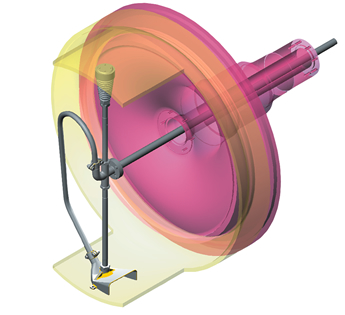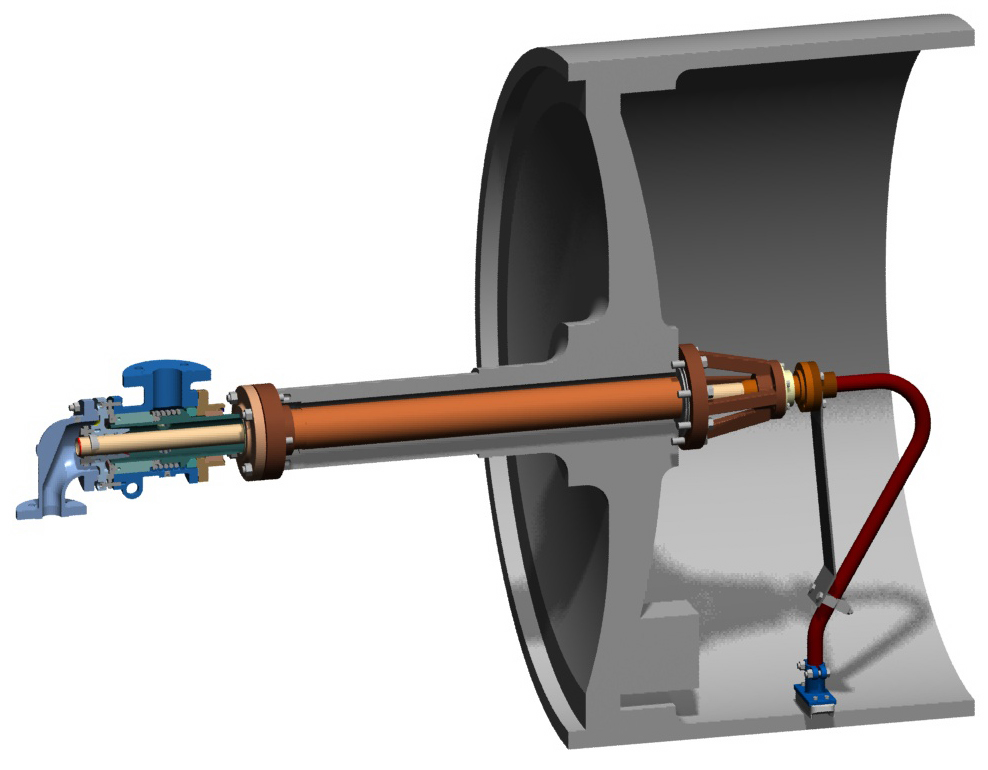Choosing an Effective & Efficient Syphon System
A syphon system's function is simple: it removes a fluid from within a rotating drum or cylinder. But there are many complex and interrelated factors that determine how a syphon performs this function and how it interacts with other components within the entire system. For an effective and efficient syphon system, all factors must be considered during the specification process.
How a Syphon Works
A syphon is an arrangement of piping inside a rotating cylinder that allows a fluid to flow from inside the cylinder out to a rotary joint. The rotary joint connects the rotating cylinder to stationary piping outside the cylinder.
In most cases, the motive force that causes a flow through the syphon is differential pressure. This differential is present whenever there is greater pressure at the inlet of the syphon than at the outlet, since a fluid always flows from the area of the highest pressure toward the area of lowest pressure.
Without sufficient differential pressure or fluid velocity head, efficient fluid evacuation is not possible, resulting in flooding.
Several factors determine how much differential pressure is needed to operate a syphon. The amount of centrifugal force present at operating speeds, the viscosity of the fluid being transported, and the presence of air or gas entrained in the flow (a condition known as blow-through) are all to be considered. Even the basic configuration of the syphon itself, the interior diameter of syphon piping, and external outlet pipe sizing can have a profound effect on pressure differential requirements.
Rotary Syphons Rotary syphons rotate with the cylinder. Instead of being fixed in one position, rotary syphons remain fixed in relation to a point on a rotating cylinder shell. Rotary syphon systems may use either a single syphon or multiple syphons for evacuation, depending on application conditions and requirements.
Rotary syphons rotate with the cylinder. Instead of being fixed in one position, rotary syphons remain fixed in relation to a point on a rotating cylinder shell. Rotary syphon systems may use either a single syphon or multiple syphons for evacuation, depending on application conditions and requirements.
Since the rotary syphon inlet (i.e., syphon shoe) remains fixed in relation to the cylinder shell, a rotary syphon inlet can be placed closer to the cylinder shell. A stationary syphon inlet, on the other hand, must be placed high enough to allow sufficient clearance, under all conditions, between the syphon inlet and the cylinder shell passing beneath it.
This close clearance has an important effect on heat transfer consistency across the face of a cylinder. A rotary syphon, with its lower syphon clearance, produces a more even cross-cylinder temperature transfer profile when the condensate is in the rimming stage. This directly translates into more uniform heating or cooling – which, of course, means higher machine performance, more consistent moisture profiles and better final product quality.
Stationary Syphons A stationary syphon remains fixed in one position as the cylinder rotates. The syphon pipe terminates at the pickup, which is located above the cylinder shell. The syphon must be located high enough to ensure sufficient clearance between the pickup and shell under all conditions.
A stationary syphon remains fixed in one position as the cylinder rotates. The syphon pipe terminates at the pickup, which is located above the cylinder shell. The syphon must be located high enough to ensure sufficient clearance between the pickup and shell under all conditions.
Once fluid enters a stationary syphon, it is no longer subjected to centrifugal forces. High differential pressures and blow-through steam flow rates are not needed to propel condensate up the syphon and out of the cylinder.
Therefore, less motive force (i.e., differential pressure) is required to maintain flow and evacuation. This is why stationary syphons can operate with low, or in some special cases, no pressure differential.
This also means the amount of differential pressure required for flow does not increase as rotational speed increases, as with rotary syphons. For this reason, stationary syphons are not speed-limited unlike conventional rotary syphons which require progressively higher pressure differentials as speeds rise to overcome the resulting increase in centrifugal force.
Choosing the right syphon
If there were only one kind of rotating cylinder, and only one set of operating conditions, choosing the right syphon system for optimum performance would be a simple matter.
To end up with the most effective syphon system, a great deal of care must be taken at the beginning of the process when the syphon type and rotary joint type are selected and sized.
Such variables as operating pressures, differential pressure, speed, fluid load, and cylinder configuration and design are the critical factors. In addition, the nature of the product being carried – its composition, its entering temperature or moisture, the required exiting temperature or moisture – also needs to be considered.
The condensing rate (steam in dryers) or the incoming fluid flow rate, pressure and temperature (in heating and cooling rolls) should be considered. There are many times when viscosity, corrosiveness, specific volume, and other fluid characteristics also warrant consideration.
Attention must also be paid to the configuration of the machine, including existing and future requirements. The diameter of cylinders, cylinder design, and the total number of cylinders used, often play a role in determining the proper system. Even the plant's regular maintenance schedules, the timing of shutdowns, overall plant energy balance, and electrical considerations can be a deciding factor in which syphon system is finally chosen.
